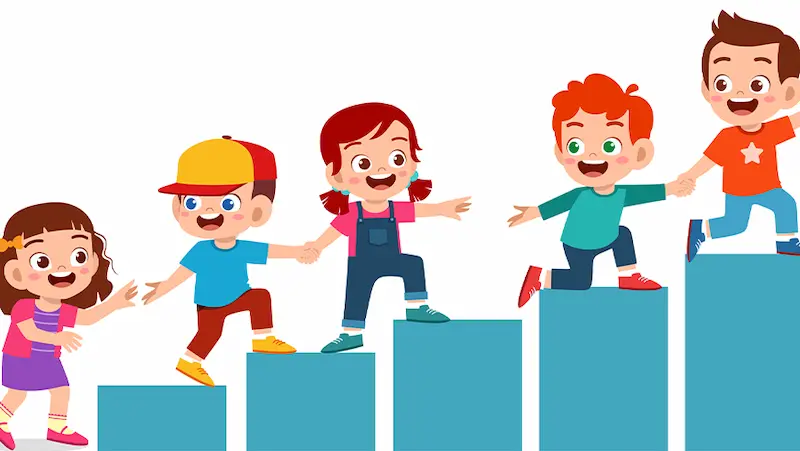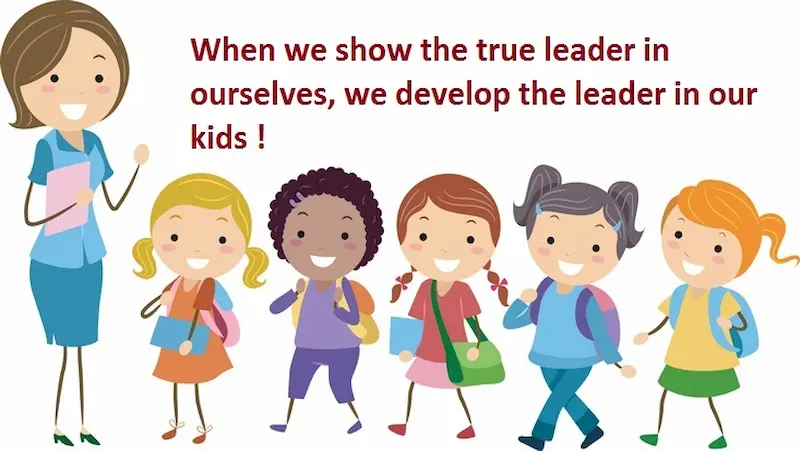How can we foster leadership skills in children from a young age? Building leadership skills in kids is crucial for their personal growth and future success.
By encouraging them to take initiative, make decisions, and work collaboratively, we can instill qualities like confidence, communication, and empathy. Providing opportunities for them to lead small projects or engage in team activities helps develop their problem-solving abilities, resilience, and adaptability.
Through mentorship, positive reinforcement, and fostering a growth mindset, we can nurture the next generation of confident and capable leaders.
Table of contents
- Introduction
- Characteristics of Effective Leaders
- Fostering Confidence and Self-Esteem
- Encouraging Communication and Collaboration
- Developing Decision-Making Skills
- Cultivating Problem-Solving Abilities
- Instilling Resilience and Adaptability
- Empathy and Emotional Intelligence
- Leading by Example
- Encouraging Leadership Opportunities
- Conclusion
- Frequently Asked Questions
Introduction
Nurturing leadership skills in children is of paramount importance as it equips them with valuable tools for future success. Leadership skills empower kids to take charge of their lives, make informed decisions, and effectively communicate their ideas.
By fostering these abilities, children learn to think critically, solve problems, and work collaboratively with others. Leadership skills also cultivate self-confidence, resilience, and adaptability, enabling children to navigate challenges and setbacks with resilience.
Additionally, leadership skills promote empathy and understanding, encouraging children to consider diverse perspectives and develop strong interpersonal relationships. These skills are highly sought after in various professional settings, where individuals who can inspire, motivate, and lead others are valued. Positive discipline fosters effective leadership skills by promoting a nurturing environment that encourages growth and empowers individuals to learn from their mistakes.
Ultimately, nurturing leadership skills in children not only prepares them for future leadership roles but also helps them become confident, compassionate, and influential individuals in their personal and professional lives.

Characteristics of Effective Leaders
Successful leaders possess a range of key qualities and characteristics that can be developed in children. One essential trait is effective communication. Children can be encouraged to express their thoughts and ideas clearly, listen actively, and engage in open and respectful dialogue. A notable example is Malala Yousafzai, who advocated for girls’ education and communicated her message worldwide, inspiring others to take action.
Another important quality is empathy, which can be nurtured through teaching children to understand and care about the feelings and experiences of others. A remarkable child leader in this regard is Mari Copeny, also known as “Little Miss Flint,” who raised awareness about the Flint water crisis and its impact on her community, showcasing compassion and empathy.
Leadership skills for kids involve teaching them how to communicate effectively, work collaboratively, make responsible decisions, and inspire others to achieve common goals, empowering them to become future leaders.
Leadership also involves decision-making and problem-solving skills. Children can be encouraged to analyze situations, consider alternatives, and make informed choices. A notable child leader is Gitanjali Rao, who invented a device to detect lead in drinking water, showcasing her problem-solving abilities and innovation.
Furthermore, resilience is crucial for leadership. Children can be taught to embrace challenges, learn from failures, and persist in their pursuits. A story that exemplifies this is that of Ryan Hickman, a young environmentalist who started a recycling business at the age of 7, demonstrating resilience and determination.
Lastly, collaboration and teamwork are essential leadership qualities. Children can be encouraged to work cooperatively, value diverse perspectives, and contribute to collective goals. A shining example is Marley Dias, who initiated the #1000BlackGirlBooks campaign, highlighting the importance of inclusivity and teamwork.
By sharing these examples and stories of child leaders who have made an impact, children can be inspired and encouraged to develop these key qualities within themselves. They can realize that their age should not limit their ability to make a difference and that leadership is within their reach.

Fostering Confidence and Self-Esteem
Building confidence and self-esteem in children is crucial for their development as leaders. Self-belief is closely tied to leadership because confident individuals are more likely to take risks, make decisions, and inspire others. Here are some strategies for fostering confidence and self-esteem in children:
1. Encourage positive self-talk: Teach children to replace negative thoughts with positive affirmations. Help them focus on their strengths and celebrate their achievements, no matter how small.
2. Set achievable goals: Encourage children to set realistic goals and break them down into manageable steps. This helps them experience success and builds their confidence over time.
3. Provide constructive feedback: Offer specific and constructive feedback to help children improve their skills. Highlight their strengths and provide guidance for areas of improvement, fostering a growth mindset.
4. Promote independence: Allow children to make age-appropriate decisions and solve problems on their own. This boosts their confidence in their abilities and decision-making skills.
5. Encourage participation in activities: Encourage children to engage in activities they enjoy and excel at. This helps them build competence and confidence in their abilities.
6. Promote resilience: Teach children that setbacks and failures are part of the learning process. Help them develop resilience by encouraging them to learn from their mistakes and try again.
7. Provide leadership opportunities: Offer children opportunities to take on leadership roles, such as leading a group project or organizing an event. This allows them to practice their leadership skills and build confidence in their ability to lead others.
8. Teach problem-solving skills: Help children develop problem-solving skills by encouraging them to think critically, brainstorm solutions, and evaluate the outcomes. This enhances their confidence in their ability to overcome challenges.
By nurturing confidence and self-esteem in children, we empower them to believe in their abilities and take on leadership roles with conviction and determination.

Encouraging Communication and Collaboration
Effective communication and collaboration skills are vital for successful leadership. These skills enable leaders to convey their ideas, build relationships, and inspire others toward a common goal. Teaching children these skills from an early age sets them up for leadership success. Here are techniques for teaching children to express themselves and listen actively:
1. Role-playing: Engage children in role-playing scenarios where they take turns expressing their thoughts and listening to others. This helps them practice effective communication and empathetic listening.
2. Storytelling: Encourage children to share their stories and experiences. This not only promotes self-expression but also enhances their ability to articulate their thoughts and engage others. Storytelling nurtures children’s language development, enhancing their vocabulary and communication skills while sparking their creativity and love for learning.
3. Active listening exercises: Teach children the importance of active listening by playing games like “Simon Says,” where they have to follow instructions carefully. Encourage them to summarize what they heard to ensure understanding.
4. Reflective questioning: Teach children to ask open-ended questions that promote deeper conversations and active listening. Encourage them to listen actively and respond thoughtfully, fostering effective communication.
1. Team-building challenges: Engage children in activities like building a tower using limited materials or solving puzzles as a team. These challenges require cooperation, communication, and problem-solving skills.
2. Group projects: Assign children group projects that require collaboration and division of tasks. This encourages teamwork, communication, and the ability to work towards a shared goal.
3. Sports and outdoor games: Engaging in team sports or outdoor games helps children learn how to cooperate, communicate, and strategize together. These activities foster a sense of teamwork and mutual support.
4. Board games or card games: Play board games that require cooperation and communication, such as “Pandemic” or “Codenames.” These games promote collaboration, decision-making, and teamwork.
5. Community service projects: Involve children in community service projects where they work together towards a common cause. This fosters a sense of teamwork, empathy, and collaboration.
By emphasizing effective communication and collaboration skills, children learn to express themselves confidently, listen actively to others, and work collaboratively towards shared objectives. These skills not only strengthen their leadership abilities but also lay the foundation for building strong relationships and achieving collective success.

Developing Decision-Making Skills
Decision-making plays a significant role in leadership as leaders are often responsible for making critical choices that impact their teams or organizations. Developing the ability to make informed decisions is essential for children as they grow into leadership roles. Here’s guidance on teaching kids how to make informed choices:
1. Identify options: Teach children to gather information and generate a list of possible options when faced with a decision. Encourage them to consider different perspectives and explore various solutions.
2. Weigh pros and cons: Help children understand the concept of weighing the advantages and disadvantages of each option. Encourage them to analyze the potential outcomes and assess the potential risks and benefits associated with each choice.
3. Consider values and priorities: Guide children to reflect on their personal values and priorities. Help them understand how their decisions align with their values and how they impact themselves and others.
4. Seek advice and input: Teach children the importance of seeking advice from trusted sources, such as parents, teachers, or mentors. Encourage them to consider different viewpoints to broaden their perspective before making a decision.
5. Assess consequences: Help children understand the potential consequences of their choices. Encourage them to think about short-term and long-term effects and how their decisions may impact themselves and others. After making a decision, guide children to reflect on the outcomes.
To help children practice decision-making, you can provide them with exercises and scenarios such as:
1. Decision-making games: Use board games or online simulations that involve decision-making. These games often present children with scenarios that require strategic thinking and weighing options. Engaging in decision-making games cultivates positive habits by promoting critical thinking, problem-solving, and strategic planning, empowering individuals to make better choices in various aspects of life.
2. Real-life scenarios: Present children with real-life situations where they need to make decisions, such as planning a family outing or choosing extracurricular activities. Discuss the different factors they should consider and encourage them to make informed choices.
3. Case studies: Share age-appropriate case studies with children that involve ethical dilemmas or complex decisions. Discuss the various perspectives and possible solutions, allowing children to analyze and make informed choices.
By guiding children through the decision-making process and providing opportunities for practice, they develop critical thinking skills, learn to consider different viewpoints and become confident in making informed choices. These skills are essential for leadership roles where leaders must navigate complex situations and make decisions that impact their teams or communities.

Cultivating Problem-Solving Abilities
Problem-solving is intricately linked to effective leadership. Leaders are often faced with complex challenges that require innovative solutions. Developing strong problem-solving skills equips children with the ability to think critically, analyze situations, and generate creative solutions, all of which are essential for leadership roles. Here are strategies for helping kids develop critical thinking and problem-solving skills:
1. Encourage curiosity: Foster a sense of curiosity in children by encouraging them to ask questions and explore different perspectives. This helps them develop a natural inclination to seek solutions and understand the underlying problems.
2. Teach problem-solving frameworks: Introduce children to structured problem-solving frameworks such as identifying the problem, brainstorming potential solutions, evaluating options, and implementing the chosen solution. This provides them with a systematic approach to problem-solving.
3. Promote creativity: Encourage children to think outside the box and explore alternative solutions. Engage them in activities that promote creativity, such as art, storytelling, or inventing new games.
4. Collaborative problem-solving: Encourage children to work in teams or groups to solve problems. This promotes collaboration, communication, and the ability to consider multiple perspectives.
5. Reflect and learn from failures: Teach children that failures are opportunities for growth and learning. Encourage them to reflect on unsuccessful attempts and identify lessons that can be applied in future problem-solving endeavors.
Developing critical thinking skills in kids enhances their leadership abilities by encouraging them to analyze situations, weigh alternatives, make informed decisions, and inspire their peers to think critically, fostering effective and responsible leadership from an early age.
By developing critical thinking and problem-solving skills in children, we prepare them to face challenges with confidence and resourcefulness. Real-life examples and engaging puzzles provide opportunities for children to apply their problem-solving skills, fostering their development as future leaders who can tackle complex issues and drive positive change.

Instilling Resilience and Adaptability
Importance of resilience in leadership roles:
1. Overcoming challenges: Resilience is vital for leaders as they face various challenges and obstacles along their leadership journey. Resilient leaders are better equipped to handle setbacks, learn from failures, and find creative solutions to overcome obstacles, inspiring others to persevere.
2. Leading through change: Leadership often involves navigating change and uncertainty. Resilient leaders adapt to new circumstances, remain calm in times of crisis, and guide their teams through transitions effectively. They embrace change as an opportunity for growth and innovation.
3. Inspiring others: Resilient leaders serve as role models, demonstrating strength and determination in the face of adversity. Their ability to bounce back from setbacks and maintain a positive attitude inspires and motivates their team members, fostering a resilient and productive work environment.
Methods for teaching kids to bounce back from setbacks:
1. Encourage a growth mindset: Teach children that setbacks and failures are opportunities for learning and growth. Emphasize the importance of effort, perseverance, and the belief that abilities can be developed over time.
2. Provide support and encouragement: Be a source of support and encouragement for children when they face challenges. Help them analyze setbacks, identify lessons learned, and brainstorm strategies for overcoming obstacles.
3. Foster problem-solving skills: Encourage children to approach setbacks as problems to solve. Guide them in brainstorming alternative solutions, evaluating options, and taking proactive steps toward overcoming obstacles. This helps them develop resilience and resourcefulness.
Tips for fostering adaptability and flexibility in children:
1. Embrace change as an opportunity: Help children view change as an opportunity for growth rather than something to fear. Encourage them to be open-minded, curious, and adaptable in the face of new situations.
2. Encourage exploration: Provide children with diverse experiences and opportunities to try new things. This helps them develop flexibility by exposing them to different perspectives, challenges, and environments.
3. Teach problem-solving and decision-making skills: Help children develop problem-solving and decision-making abilities. This enables them to think critically, consider multiple options, and adapt their approach based on changing circumstances.
Also, Teaching conflict resolution skills for kids helps them overcome challenges by encouraging effective communication, empathy, and cooperation, enabling them to navigate difficult situations with understanding and find peaceful resolutions.
By teaching children to be resilient, adaptable, and flexible, we equip them with essential skills for leadership roles. These qualities enable them to navigate challenges, embrace change, and inspire others to grow and thrive in dynamic environments.

Empathy and Emotional Intelligence
Empathy and emotional intelligence play vital roles in effective leadership:
1. Role of empathy: Empathy is the ability to understand and share the feelings of others. In leadership, empathy enables leaders to connect with their team members, understand their perspectives, and respond with compassion and understanding. It fosters trust, builds strong relationships, and promotes a positive and inclusive work environment.
2. Role of emotional intelligence: Emotional intelligence involves recognizing and managing one’s own emotions and understanding the emotions of others. Leaders with high emotional intelligence can effectively navigate interpersonal dynamics, inspire and motivate their team members, and make informed decisions based on emotional and social cues.
Guidance on nurturing empathy in children:
1. Lead by example: Model empathetic behavior in your interactions with others. Show empathy towards your children, family members, and people in your community. Children learn empathy by observing and imitating the behavior of adults around them.
2. Encourage perspective-taking: Help children see situations from different viewpoints. Encourage them to consider how others might feel in different circumstances and discuss the impact of their actions on others.
3. Practice active listening: Teach children the importance of active listening by focusing on the speaker, maintaining eye contact, and showing genuine interest in what others have to say. Encourage them to ask questions and reflect on what they’ve heard.
Parent involvement in schools plays a crucial role in fostering empathy and emotional intelligence in children, as engaged parents can model these traits and create a supportive environment for their kids to develop these essential skills. Moreover, parents’ active participation enhances the overall leadership and problem-solving abilities of students, empowering them to succeed academically and in their personal lives.
By nurturing empathy in children, we develop future leaders who can understand and connect with others on a deeper level. Activities and stories that promote emotional understanding and compassion help children develop empathy as a fundamental aspect of their character, enabling them to lead with empathy and create positive change in the world.
Learn more about teaching kids about emotions.

Leading by Example
Parental role modeling has a significant impact on children’s leadership development. Children observe and learn from their parent’s behavior, including their leadership qualities. Here are ways parents can demonstrate leadership qualities in everyday life and be positive role models for their children:
1. Lead by example: Show your children what it means to be a leader by demonstrating integrity, responsibility, and resilience in your actions. Model effective communication, problem-solving, and decision-making skills in your daily interactions.
2. Encourage autonomy and decision-making: Provide opportunities for your children to make age-appropriate decisions and take ownership of their actions. Support them in setting goals, problem-solving, and learning from both successes and failures.
3. Foster a growth mindset: Encourage a mindset that embraces challenges and values continuous learning. Demonstrate perseverance and a willingness to learn from mistakes. Encourage your children to see setbacks as opportunities for growth and development.
4. Promote teamwork and collaboration: Engage your children in collaborative activities and emphasize the importance of working together towards common goals. Teach them effective communication, conflict resolution, and the value of diverse perspectives.
5. Encourage empathy and compassion: Demonstrate empathy and compassion towards others in your interactions. Teach your children to understand and respect different perspectives, and to act with kindness and empathy towards others. Teaching kids patience is a valuable life skill that helps them develop resilience, self-control, and the ability to wait calmly, enabling them to handle challenges and frustrations with a positive attitude and improved emotional well-being.
6. Support community engagement: Engage in community service activities as a family, demonstrating the importance of contributing to the community and making a positive impact. Involve your children in volunteering and helping others, fostering a sense of leadership through service.
7. Encourage initiative and creativity: Support your children in pursuing their interests, taking on leadership roles in extracurricular activities, or initiating their own projects. Foster an environment that encourages creativity, innovation, and taking initiative.
8. Practice effective communication: Model effective communication skills by actively listening to your children, expressing yourself clearly and respectfully, and encouraging open dialogue. Teach them the importance of effective communication in building relationships and leading others.
By being positive role models, parents provide a foundation for their children’s leadership development. Children learn leadership qualities by observing and emulating their parents’ behaviors. By demonstrating leadership qualities in everyday life, parents inspire their children to develop these qualities themselves, preparing them for future leadership roles with confidence, integrity, and a sense of responsibility.

Encouraging Leadership Opportunities
Practical suggestions for creating leadership opportunities for kids:
1. Family projects: Engage children in family projects where they can take on leadership roles. For example, involve them in planning a family vacation, organizing a family event, or managing a household task. This allows them to practice decision-making, delegation, and coordination skills.
2. School clubs and organizations: Encourage children to join clubs and organizations at school that provide leadership opportunities. These can include student councils, debate teams, or community service clubs. Such activities foster teamwork, communication, and organizational skills.
3. Community service initiatives: Involve children in community service projects or encourage them to initiate their own initiatives. This could be organizing a neighborhood cleanup, coordinating a charity drive, or volunteering at local organizations. Engaging in community service develops empathy, problem-solving abilities, and a sense of social responsibility.
Involvement in school, community, or extracurricular activities:
1. School involvement: Encourage children to participate in school activities such as sports teams, theater groups, or academic clubs. These activities provide opportunities for teamwork, time management, and leadership development.
2. Community engagement: Support children in getting involved in community activities or events. This could include volunteering at local charities, participating in community festivals, or joining youth groups. Community involvement helps children develop a sense of belonging, cultural awareness, and a commitment to serving others.
3. Extracurricular pursuits: Encourage children to explore their interests and engage in extracurricular activities that align with their passions, such as music, art, sports, or technology. These activities allow them to develop specialized skills, build confidence, and take on leadership roles within their chosen domains.
Advice on supporting and guiding children in leadership roles:
1. Provide guidance and mentorship: Offer support and guidance to children as they navigate leadership roles. Be available to discuss challenges, provide advice, and help them set realistic goals. Offer mentorship by sharing your own leadership experiences and lessons learned.
2. Foster independence and accountability: Encourage children to take ownership of their leadership responsibilities. Allow them to make decisions, take risks, and learn from their mistakes. Encourage them to reflect on their experiences, identify areas for improvement, and develop strategies for growth.
3. Encourage reflection and learning: Help children develop a habit of reflection by asking open-ended questions about their leadership experiences. Encourage them to consider what went well, what they learned, and how they can apply those lessons in future situations. This fosters self-awareness and continuous learning.
Supporting and guiding children in leadership roles involves providing a nurturing and empowering environment where they can develop their skills, explore their interests, and gain valuable experiences.

Conclusion
In conclusion, nurturing leadership skills and coding for kids in children is crucial for their future success. By developing qualities such as effective communication, collaboration, decision-making, resilience, empathy, and problem-solving, children can become capable leaders who inspire and drive positive change.
Parents play a vital role in this process by serving as positive role models, creating leadership opportunities, and providing guidance and support. Encouraging children’s involvement in school, community, and extracurricular activities allows them to gain practical experience and develop essential leadership skills.
By fostering a nurturing environment and empowering children to take on leadership roles, we can help them become confident, compassionate, and adaptable leaders who contribute positively to their communities and make a difference in the world.
Exploring the diverse educational offerings on BrightChamps opens up exciting opportunities for children to learn and thrive in a supportive and dynamic online environment.
To get your hands on more such educational and free resources on coding, robotics, game development, etc., do check out the Brightchamps Blog Page now!
Frequently Asked Questions
Building leadership skills in children is important as it prepares them for future success, fosters independence and confidence, and cultivates responsible and compassionate individuals.
Effective leaders possess qualities such as effective communication, collaboration, problem-solving, resilience, empathy, and the ability to inspire and motivate others.
Parents and caregivers can encourage leadership development in children by being positive role models, providing opportunities for decision-making and teamwork, and supporting their involvement in school, community, and extracurricular activities.
Promote leadership skills in kids through activities such as team projects, public speaking opportunities, role-playing exercises, volunteering, and encouraging them to take on leadership roles in clubs or organizations.
Schools can foster leadership abilities by offering leadership development programs, student councils, mentorship opportunities, and project-based learning that encourages collaboration and decision-making.
Teaching leadership skills can be tailored to different age groups. Younger children can focus on communication and teamwork, while older children can learn about problem-solving, decision-making, and mentorship.
Instilling leadership skills in children can lead to long-term benefits such as increased self-confidence, effective communication, problem-solving abilities, teamwork, and adaptability, preparing them for future leadership roles.
Parents can balance leadership development with other qualities by emphasizing empathy, humility, and respect for others. Encouraging a well-rounded approach to leadership fosters ethical and compassionate leadership.
Examples of exceptional child leaders include Malala Yousafzai, Greta Thunberg, and Alex Scott, who have made significant impacts in areas such as education, climate activism, and philanthropy.
Challenges parents may face include resistance to leadership roles, fear of failure, or finding the right balance. Overcoming these challenges involves providing support, and encouragement, and creating a nurturing environment where children can learn and grow.


 We are an army of educators and passionate learners from BrightChamps family, committed to providing free learning resources to kids, parents & students.
We are an army of educators and passionate learners from BrightChamps family, committed to providing free learning resources to kids, parents & students.













